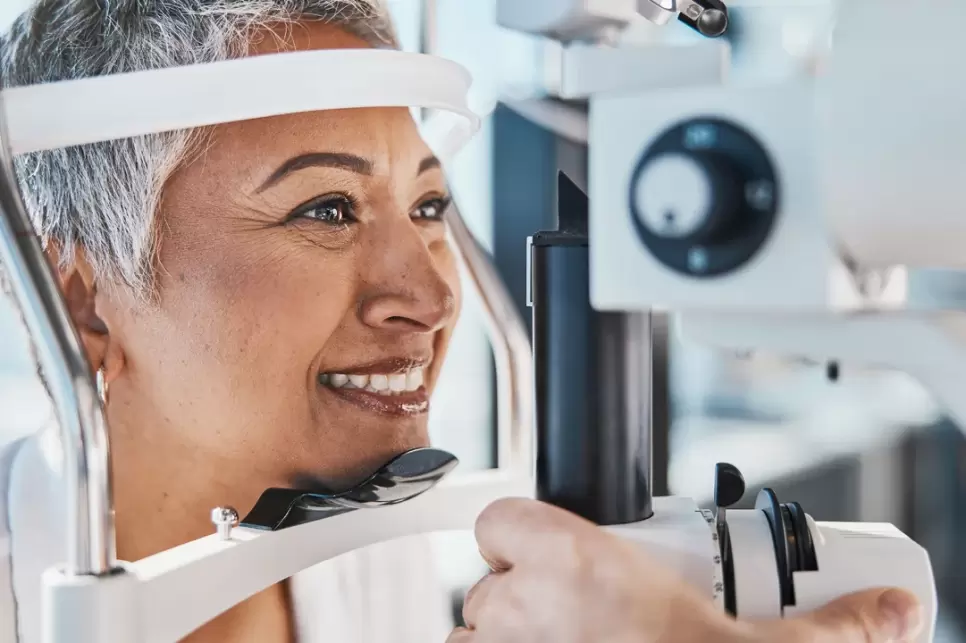 Blog
Blog
Diabetic retinopathy is one of the most common – and preventable – causes of vision loss among adults. Yet many health plans are missing a major opportunity to reduce risk, improve outcomes, and boost HEDIS® scores.
These three important data points illustrate why routine vision matters and how a smart routine vision strategy can be critical to your members’ health and to your plan’s bottom line.
1: More than 50% of people with diabetes will develop diabetic retinopathy.1
Diabetic retinopathy is an eye condition associated with high blood sugar levels that can damage retinal blood vessels and cause vision loss. For those diagnosed with diabetes, diabetic retinopathy isn’t rare. Instead, it’s an expected outcome when eye care is not actively managed.
For health plans with large populations of members diagnosed with diabetes, the risk is embedded in the population. This makes performance on the HEDIS® eye exam for patients with diabetes (EED) more than just a quality issue; it’s a population health imperative.
2: More than 90% of diabetes-related vision loss can be avoided with early detection and treatment.2
Early detection of retinal changes can help ensure timely treatment and, therefore, reduce the likelihood of later blindness and expensive medical-surgical interventions. For both members and payers, the value of prevention is huge.
The easiest and most reliable way to detect retina changes before they become serious problems is with a retinal eye exam, which is recommended annually for those with diabetes.
3: 60% of people with diabetes fail to get annual eye exams.3
When so many members diagnosed with diabetes miss their annual eye exams, both the members and their health plans are at increased risk. For members, it’s the risk of preventable vision loss, and for health plans, it’s lower Star ratings and missed quality targets.
This persistent care gap is also highly preventable. The solution? A comprehensive program designed to close HEDIS® EED care gaps with targeted member outreach, optometry and PCP engagement, and thorough care coordination.
These programs, such as Health Network One’s Routine Vision program, can help health plans achieve and maintain 5-Star ratings.
Turn These Stats into Action
Health plans that invest in a smart routine vision strategy today can expect measurable gains in HEDIS® EED performance, Star ratings, and member outcomes tomorrow.
At Health Network One, we’ve spent more than 30 years managing vision care, and we’ve built a better model. We manage the full member experience – from scheduling to claims – and pair it with an embedded HEDIS® EED strategy that’s been refined over more than a decade.
We combine frictionless optometry scheduling with active PCP engagement, creating two channels to close the same gap. This dual-channel approach is what makes our model work – efficiently, repeatedly, and at scale.
The result? Higher Star ratings, lower friction, and zero lift for the plan.
Make sure your 2027 bid includes the full picture. See what’s possible today at https://healthnetworkone.com/hedis-eed-compliance.